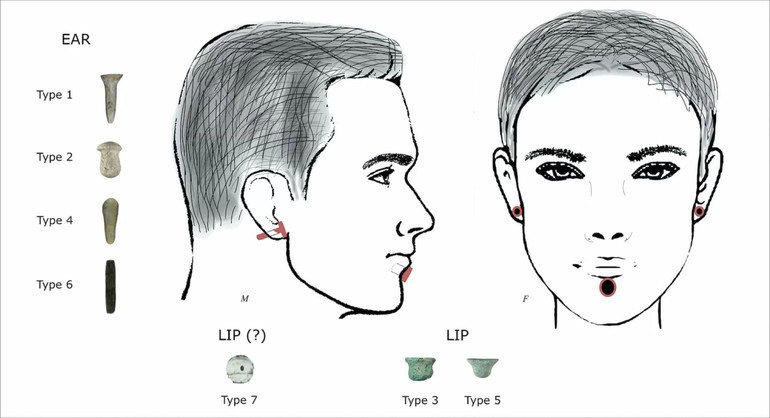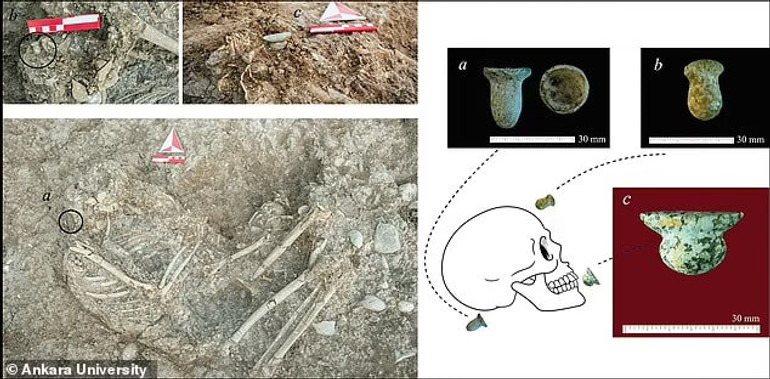How old is the oldest piercing? Scientists have found the answer
[ad_1]
A piercing that is more than 11 thousand years old
Ankara University
Archaeologists found the earliest known evidence of body perforation in skeletons during excavations at Boncuklu Tarla in southeastern Turkey.
They were probably made 11 thousand years BC, it is said in a study published in the journal Antiquity, writes Arkeo news.
Scientists have found that piercings were done only by adults, so they suggest that the prehistoric custom may have been related to a coming-of-age ritual.
A team from Ankara University found more than 100 pieces of jewelry buried in the graves of 11,000-year-old people during excavations at Boncuklu Tarla between 2012 and 2017.

Scientists have established how jewelry looked in the 11th century BC
Ankara University
The piercing usually lay next to the ears and chin of the skeletal remains. Most of the jewelry was made of limestone, obsidian, chlorite, copper, or river pebbles. Their variety suggests that they were designed to be worn in the ears and on the lower lips (known as labrets).
Scientists examined the remains of the skeletons and confirmed that these ancient people wore jewelry in the lower lip, as evidenced by wear patterns on the lower incisors. Similar changes can be seen in modern people.
At the same time, none of the children’s burials contained such decorations, so archaeologists assume that the piercing was not only aesthetic, but also had social significance.
The find challenges narratives that date the practice of body perforation no earlier than the middle of the 7th millennium BC.

Photo from excavations in Turkey
Ankara University
The research team, led by the associate professor of the Department of Prehistory at Ankara University, Emma Luisa Baysal, believes that this discovery will help to clarify previously found artifacts, as well as reevaluate the Neolithic data in Southwest Asia.
“This demonstrates that the traditions that are still a large part of our lives arose during an important transition period, when people first began to settle in permanent villages in western Asia more than 10,000 years ago.
They had very elaborate practices of ornamenting beads, bracelets and pendants. These people had a highly developed symbolic world, for the expression of which they used the human body.”– Dr. Baisal explained.
The researchers hope to continue the excavation to learn more about the choice of raw materials and the traditions of body decoration.
[ad_2]
Original Source Link











